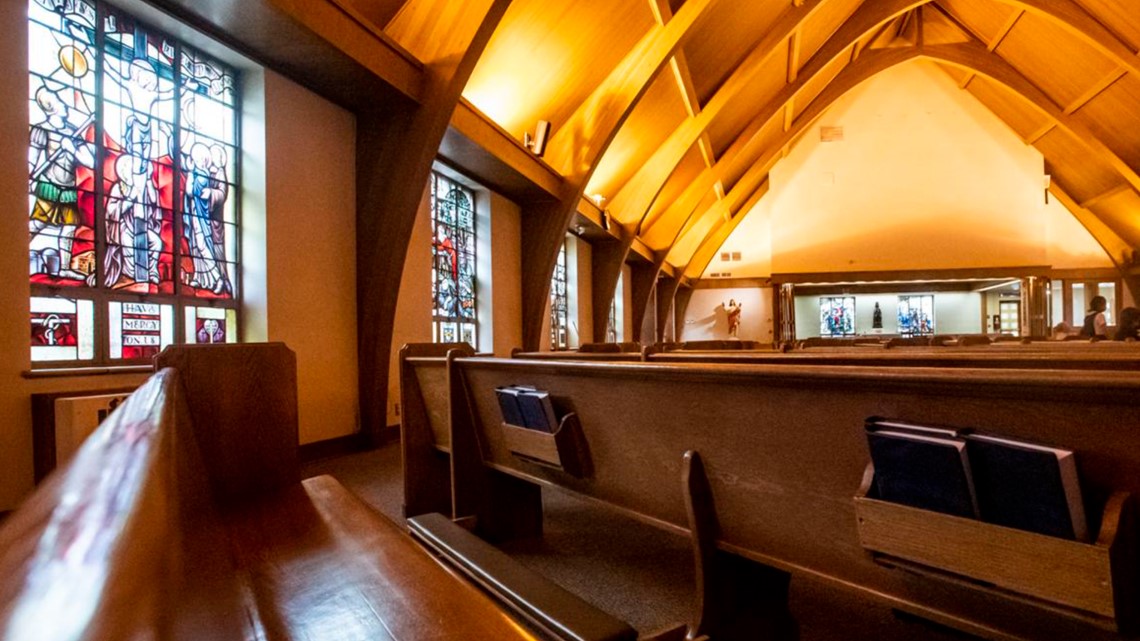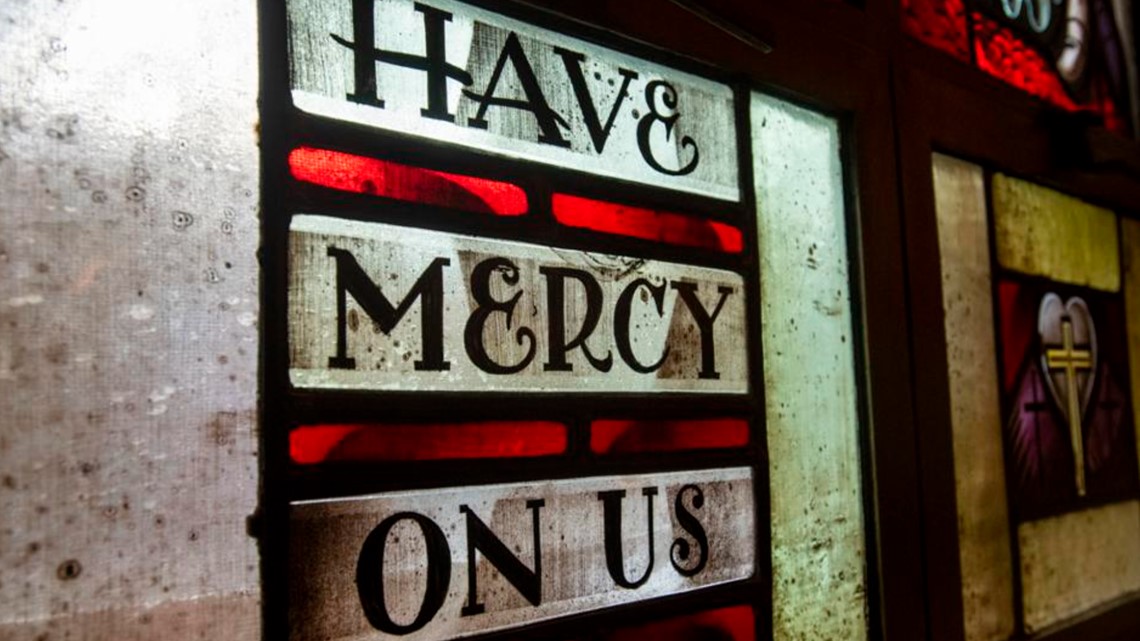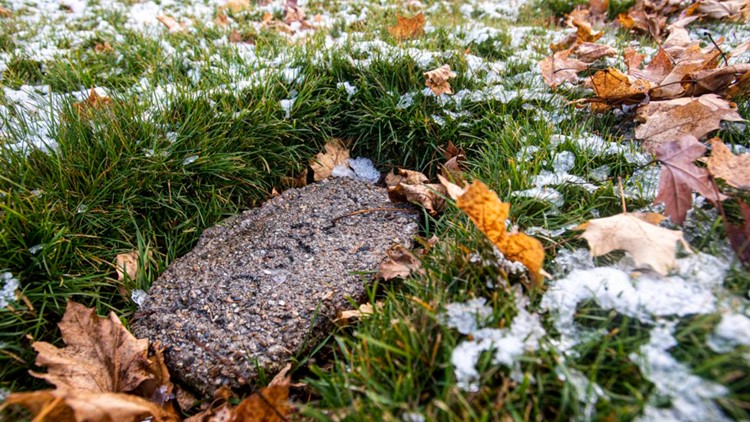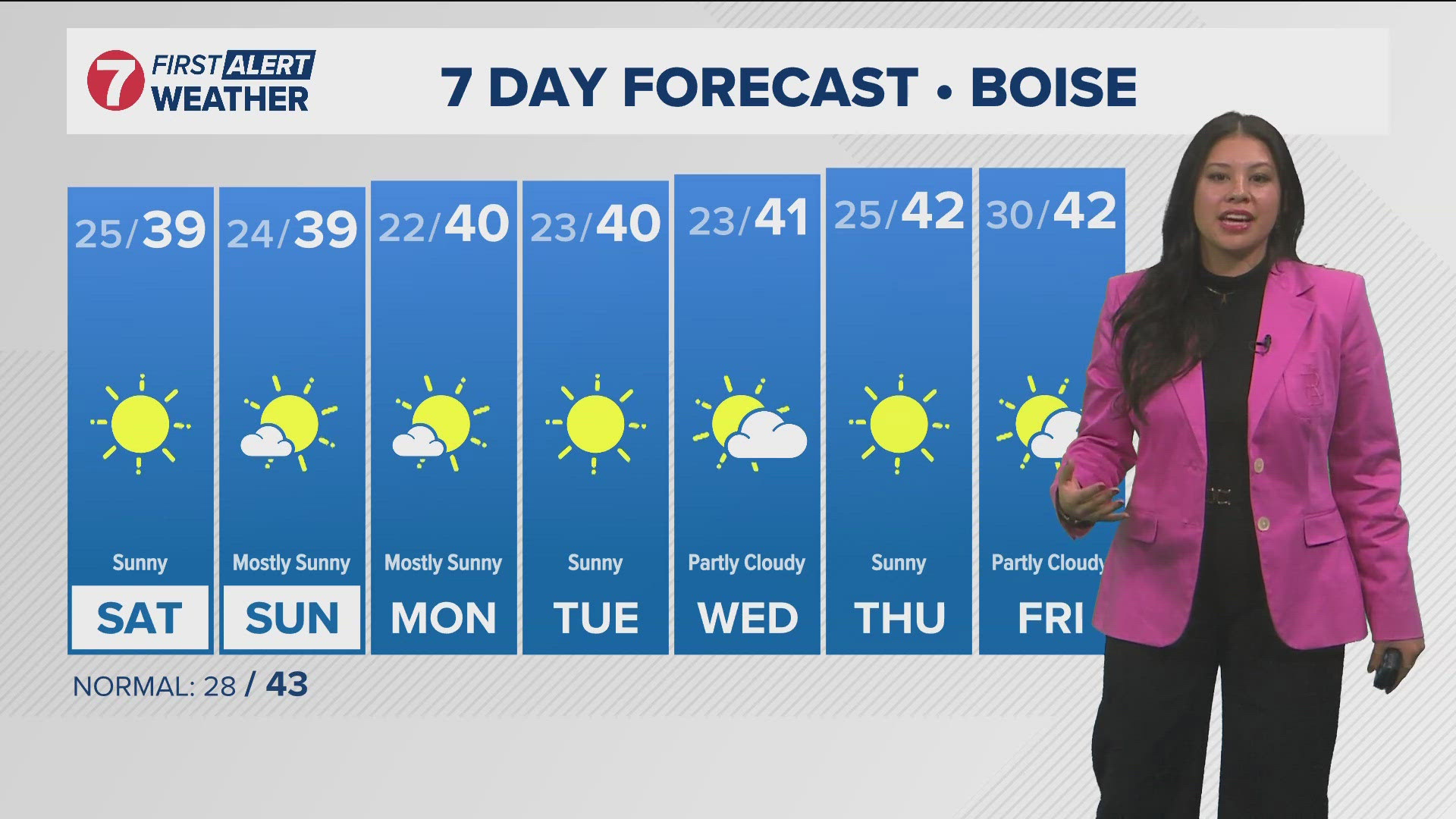BOISE, Idaho — This article originally appeared in the Idaho Press.
A man died of cyanide poisoning in Sacred Heart Catholic Church in Boise in 1982, where he left a note with his name signed on it. Only, Boise Police confirmed it wasn’t his real name — and the man is still unidentified to this day.
A national cyanide controversy from 1982, a priest murder, a cryptic note and a false identity are all part of the mysterious circumstances surrounding his death.
When nurse and church goer Virginia Almquist walked into Sacred Heart 39 years ago for mass on Dec. 3, she was approached by the church usher, Leo Leeburn, in a panic. His mother, Grace Leeburn, had discovered a dead man.
The man was found outside the confessional booth, face down and slumped over in the fifth pew. He was clean shaven with tan skin, sandy blonde hair, dressed in blue jeans, a green long-sleeved shirt accented with a turquoise bolo tie, a Seiko watch wrapped around his wrist, and cowboy boots fitted on his feet, according to the National Missing and Unidentified Persons System. He was believed to be between 35-45 years old.
The tale of the mystery man in the church was re-told in the family often, said Almquist’s daughter, Sharon Job.
On that cold December day, Job said, Almquist reached down to take the man’s pulse but found there was none.
“He was cold,” Job said.
Almquist rushed outside seeking Father Faucher, the priest at the time, who lived near the church.


On her way out, Almquist stopped Sister Mary Louise Deroin, who pulled up to Sacred Heart Church in her car for evening mass.
Deroin currently resides in Ventura, California, where she moved after retiring from being a Sister of the Holy Cross at Saint Alphonsus Medical Center.
“Virginia came out of the church and ran to the car before I could even get out. She told me that they had just noticed a man under a pew in the church,” Deroin told the Idaho Press in an interview. “She told me he was dead because she checked him.”
Deroin bolted inside the rectory and called police.
“I didn’t have a chance to see him. I didn’t want to,” Deroin said.
On Dec. 20 1982, the church held a funeral service for the mystery man. He was laid to rest in a gray coffin.
“He knew if he came to a church he’d be taken care of,” Faucher said.
INVESTIGATION
According to United Press International News archives, a toxicology report stated the man had died of cyanide poisoning.
When the Boise Police Department arrived on the scene, officers found the man in a slumped over, kneeling position. After rolling him over, police found a cryptic suicide note written with a typewriter and $1,900 in cash inside a brown envelope in his shirt pocket, according to a police report. Coroner Mike Roberts estimated his time of death to be around noon. Witnesses found the man five hours later.
The note began with, “In the event of my death,” and instructed whoever found him to use the money enclosed for his funeral. Leftover money should be donated to the church, the note said. It also stated that the man wished to be cremated.
The note ended with the remark: “God will see to your honesty in this.”
The letter was signed “Wm. L. Toomey.”
But police could never confirm that was the man’s real name.
The police report stated the man’s wallet was empty with the exception of $53. All other forms of identification had been discarded, the report said. There was no way to put a name to the mysterious man.
“My mom was always sad his family never knew,” Job said. “We always said we wish they could find out who he was.”
Boise Police detective Frank Richardson, seven years later, said in a 1991 episode of “Unsolved Mysteries” that all leads to connect the man to the name William Toomey were exhausted, and he likely used a pseudonym.
“They kept his body at the morgue for a while to see if there was family they could contact,” Deroin said. “But, they couldn’t.”
Richardson said he later discovered “Toomey” was the name of a company that manufactured priest and nun garb, according to a 2005 article from The Austin Chronicle.
Richardson said in the episode police believed the man was from somewhere in the southwest United States, such as Texas or New Mexico, because of his sun tan in the middle of winter, bolo tie and large accented belt buckle with a Mexican coin in the middle.
Boise Police told the Idaho Press that currently no one in the department is working to confirm the man’s identity 39 years later with DNA, however the case is still classified as an open investigation.


THE TYLENOL MURDERS
Deroin said the fact the mystery man poisoned himself with cyanide was odd because two months before his death, a national panic ensued regarding Tylenol laced with cyanide.
The events left seven people dead in Chicago and is known to this day as “The Tylenol Murders,” which remain unsolved.
“Maybe he was responsible (for the murders), came out and committed suicide for it, since he died of cyanide,” Deroin said.
According to The Washington Post, the Tylenol laced with cyanide came from two different manufacturing facilities — one in Pennsylvania, and one in Texas. One bottle was found to have 14 laced capsules out of the 50 in the bottle.
Johnson & Johnson recalled more than 31 million bottles of Tylenol in circulation.
Others also echoed this odd coincidence. Jeff Wade, a Boise crime writer and researcher, has heavily researched the Boise John Doe. He said it seemed “interesting” and worth looking into that the man could be from Texas, where the cyanide-laced Tylenol was manufactured. The murders came just two months before the man poisoned himself with cyanide.
Additionally, a man from Texas died from a cyanide-laced pill in 1986, four years later.
Wade referenced the coincidental Tylenol murders, and stated he doesn’t believe cyanide was too hard to get at the time of both incidents.
THEORIES
Robin Warder, host of “The Trail Went Cold” podcast, featured Toomey’s case on an episode of his show, which focuses on unsolved mysteries and cold cases.
Warder told the Idaho Press he believes Toomey had a personal connection to Sacred Heart Church since he took his life there.
“I know that suicide is considered a mortal sin in Catholicism, so I’ve always wondered if he made a calculated decision to ingest the cyanide and hoped that he could receive absolution from the priest in the confessional before it took effect,” he said.
“However, since the confessional was occupied at the time, he died before he could actually see the priest.”
Deroin said there were few people in the church at the time, and no one noticed the man sitting toward the back of the numerous rows of pews.


Wade echoed the same belief, adding that it’s possible the man may have been molested by a priest and went into the church seeking some sort of revenge or recognition, but never was able to find it.
Wade also mentioned a possible connection to murders of two priests in Odessa, Texas. This theory potentially takes the cold case to Texas and Arizona.
According to the 2005 Austin Chronicle article, Father Patrick Ryan, a priest in Texas, was violently murdered in a hotel room in December 1981. A man named James Reyos was imprisoned in connection to Ryan’s death.
Additionally, another priest, Father Benjamin Carrier, was murdered in a hotel room in Arizona, the article stated.
Richardson was suspicious of these two murders being connected to his years-long cold case in some way, as he believed Toomey was affiliated with the Catholic Church.
Richardson had even traced Toomey’s belt buckle to a gift shop in Arizona, but that led nowhere, according to the “Unsolved Mysteries” episode. Toomey’s fingerprints were taken, which also led nowhere. To Richardson, that meant he was never convicted of a crime, wasn’t enlisted in the military and was not a member of a licensed profession.
For these reasons, Reyos’ defenders believe Toomey could be responsible for the deaths of Ryan and Carrier — Toomey had been in Arizona at one time, and he could have been a priest, someone who didn’t need fingerprints to just “pop up” in places, the article said.
“Toomey could have killed Ryan,” Wade said. He couldn’t say why Richardson felt there was a connection, but said “it had to be something strong.”
FINAL RESTING PLACE
Dry Creek Cemetery is located off Old Horseshoe Bend Road in Eagle. The cemetery is quaint, with vast fields holding remains of loved ones that are scattered up and down the hillside.
Toomey resides there to this day. His gravesite is somber.
Falling snow clung to the surrounding grass in mid-December. The ground was coated with ice, and brown leaves covered Toomey’s headstone.
Toomey’s headstone is not much of a headstone at all, rather a slab of gravel and rock. He resides next to other unknown and unclaimed dead, who remain in the cemetery with similar headstones.
It almost looks as though his name was carved into the rock with a dull knife — the words are faded and barely readable after 39 years of weather and wear.
Job said her mother told his story “until she died.”
“My mother was always sad for him and his family,” Job said.
The story never changed, Job said, but there was always a sadness surrounding the local mystery.
Today, Boise Sacred Heart Church leaders refer to the unknown man who poisoned himself as the “Boise John Doe” — someone whose identity may never be revealed.
This article originally appeared in the Idaho Press, read more on IdahoPress.com.
More from our partner Idaho Press: 'Visionary': Local children and families advocate Sus Helpenstell dies
Watch more Local News:
See the latest news from around the Treasure Valley and the Gem State in our YouTube playlist:



